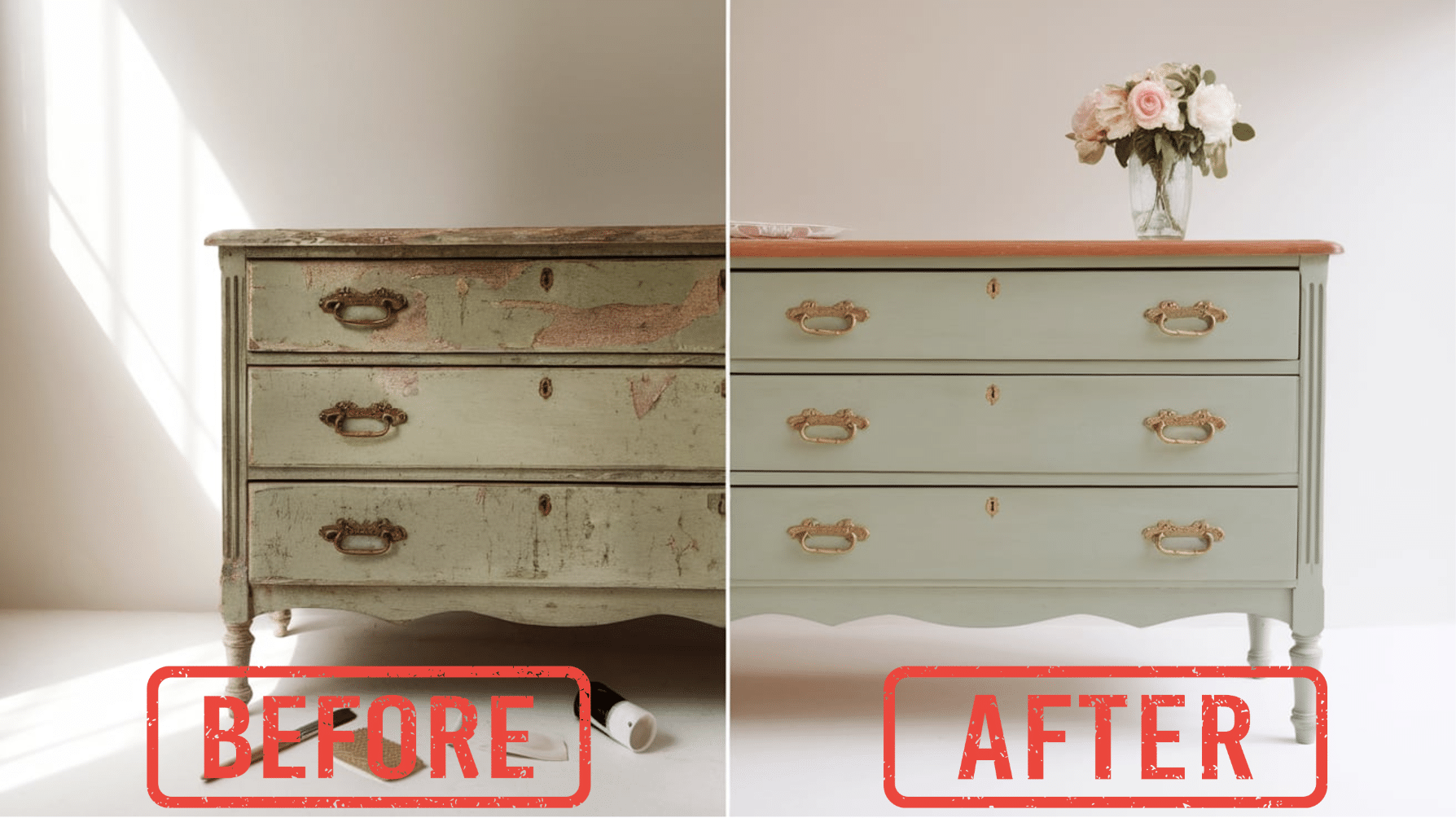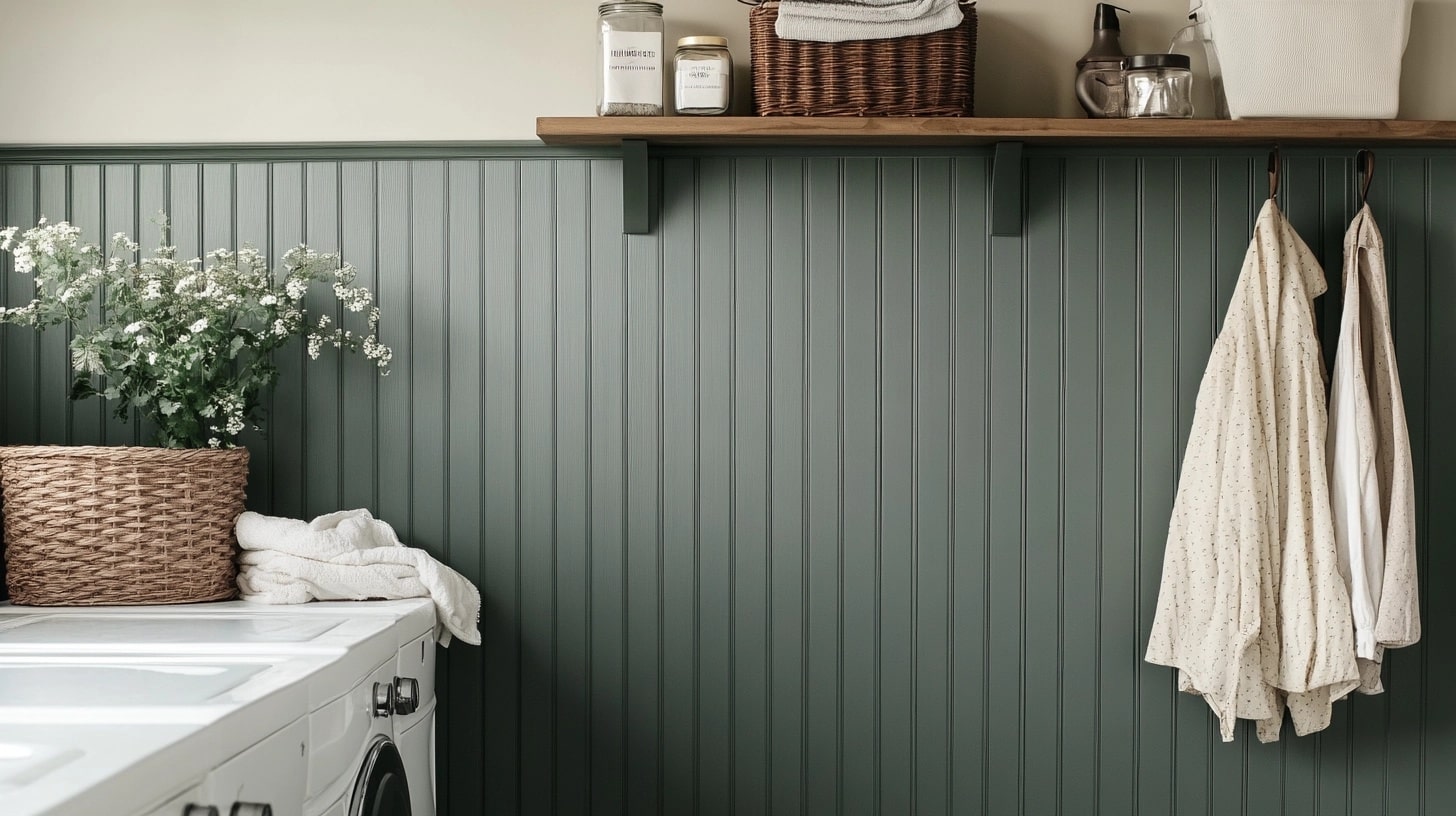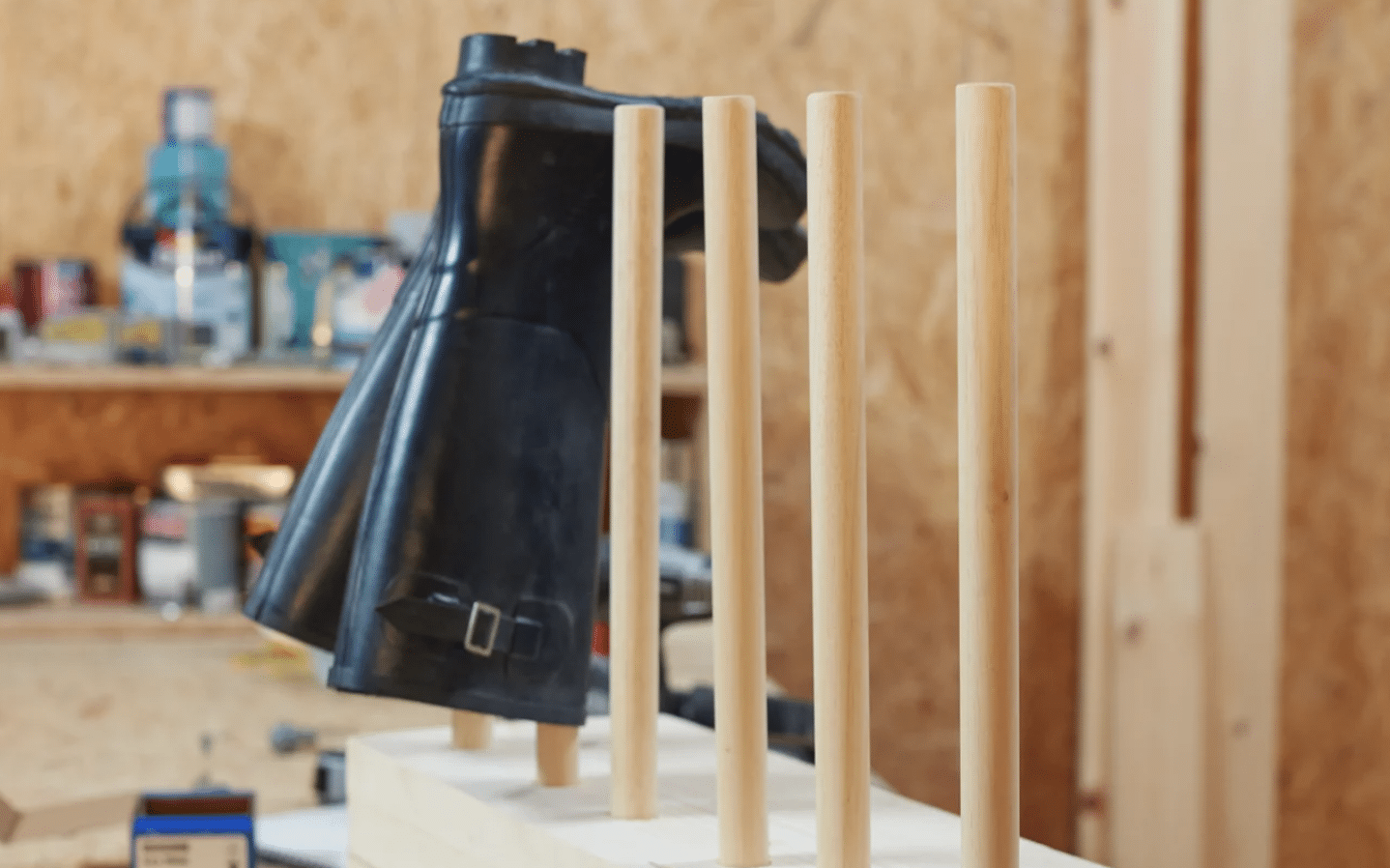Bring Old Furniture Back to Life: Your Complete Upcycling Guide
The art of updating old furniture keeps growing as people seek ways to add character to their homes. Upcycling turns forgotten pieces into fresh, useful items while helping our planet.
More than just a hobby, furniture upcycling lets you express your style and save money. It offers a chance to own unique pieces that stand out from store-bought options.
This guide walks you through furniture upcycling, from finding the right pieces to selling your creations. You’ll learn practical skills and techniques.
Here, you’ll find valuable tips for refreshing a family heirloom or starting a small business. We cover the tools, techniques, and tricks that make projects successful.
Let’s explore how to give old furniture new purpose and value.
What is Upcycling?
Defining the Concept
Upcycling takes old furniture and makes it better than its original form. This process differs from recycling, where items are broken down into raw materials.
The practice of upcycling furniture started in the mid-20th century when people needed to save money. Families would fix and update their existing furniture instead of buying new pieces.
Evolution Through Time
The 1990s saw a rise in furniture upcycling as environmental concerns grew. People started to see the value in older, well-made pieces that could last for generations.
Today, upcycling combines creativity with environmental care. It lets people express their style while keeping useful items out of landfills.
Benefits of Upcycling Furniture
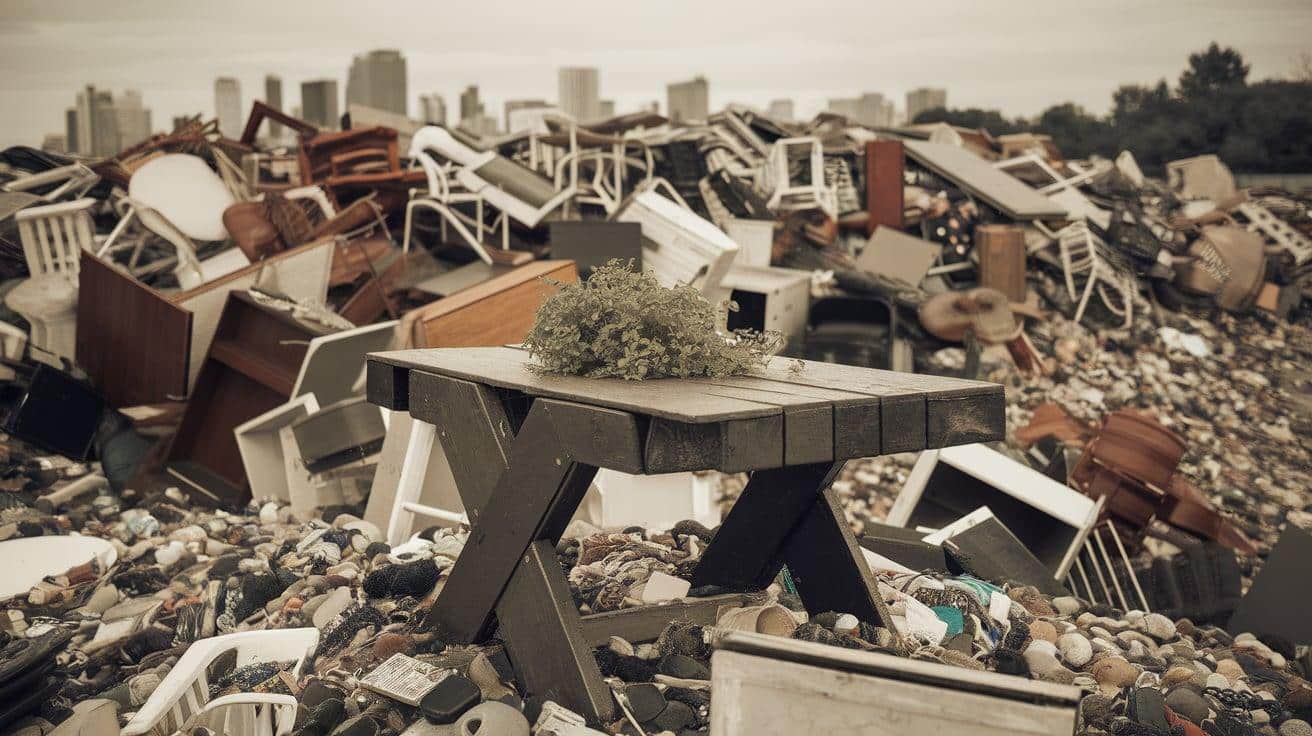
Environmental Impact
Every piece of furniture kept from landfills helps our planet breathe easier. Old furniture often contains solid wood and quality materials that can serve for many more years.
Modern furniture often travels thousands of miles before reaching homes. By upcycling local pieces, we reduce transportation and packaging waste.
Personal Growth
Creating something unique brings satisfaction that buying new items cannot match. Each project teaches new skills and builds confidence in working with different materials.
The process lets you add personal touches to make furniture fit your space perfectly. You control every aspect, from color choice to final finish.
Money Matters
Upcycling costs far less than buying new furniture of similar quality. A basic set of tools and supplies can update multiple pieces for the price of one new item.
Quality vintage furniture often has better construction than new pieces. With some care and updates, these items provide better value over time.
Essential Tools and Materials Needed for Upcycling
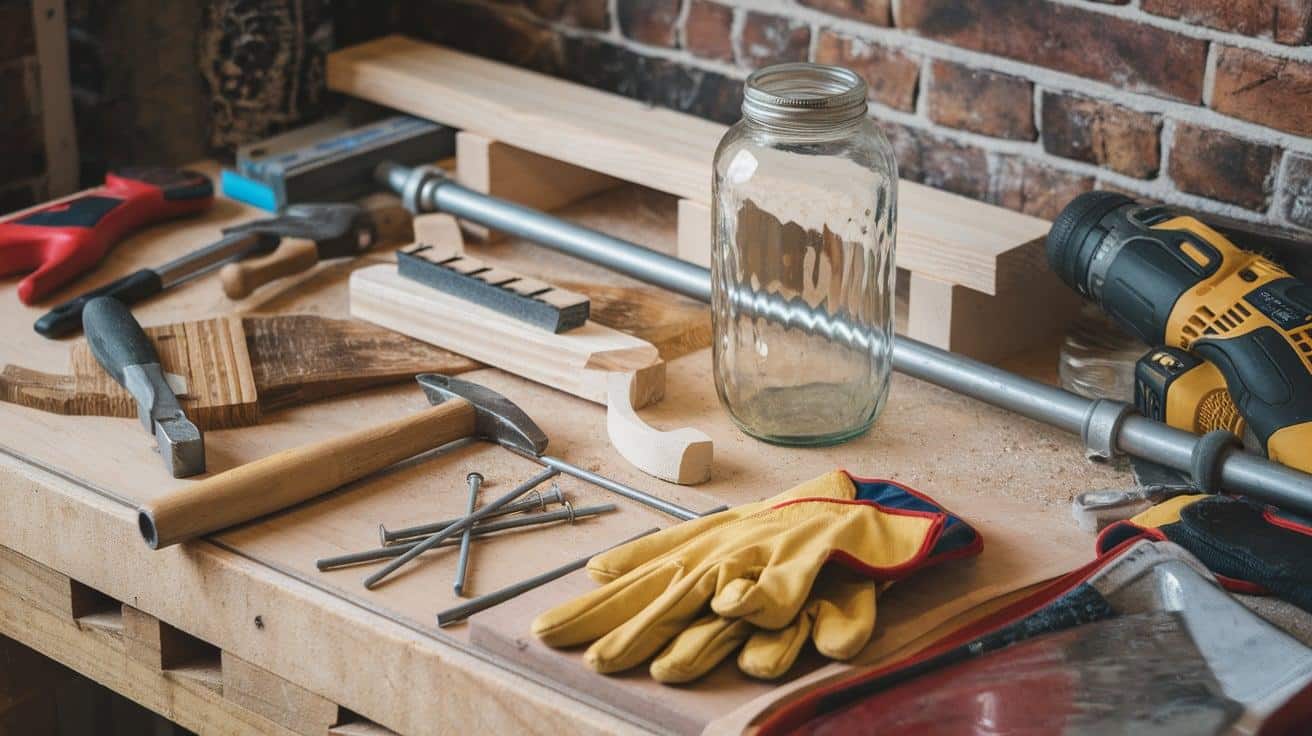
Basic Tools for Beginners
A few key tools are the foundation of furniture upcycling work. You’ll need sandpaper in various grits, paintbrushes of different sizes, and a screwdriver set.
Hand tools like pliers, hammers, and measuring tape help with basic repairs. A putty knife and wood filler handle small surface fixes.
Advanced Equipment
Paint sprayers help create smooth finishes on larger pieces, and an electric sander saves time and energy when working on big surfaces.
Power tools like drills and jigsaws open up more complex project options. These tools require practice but expand what can be created.
Selecting the Right Furniture
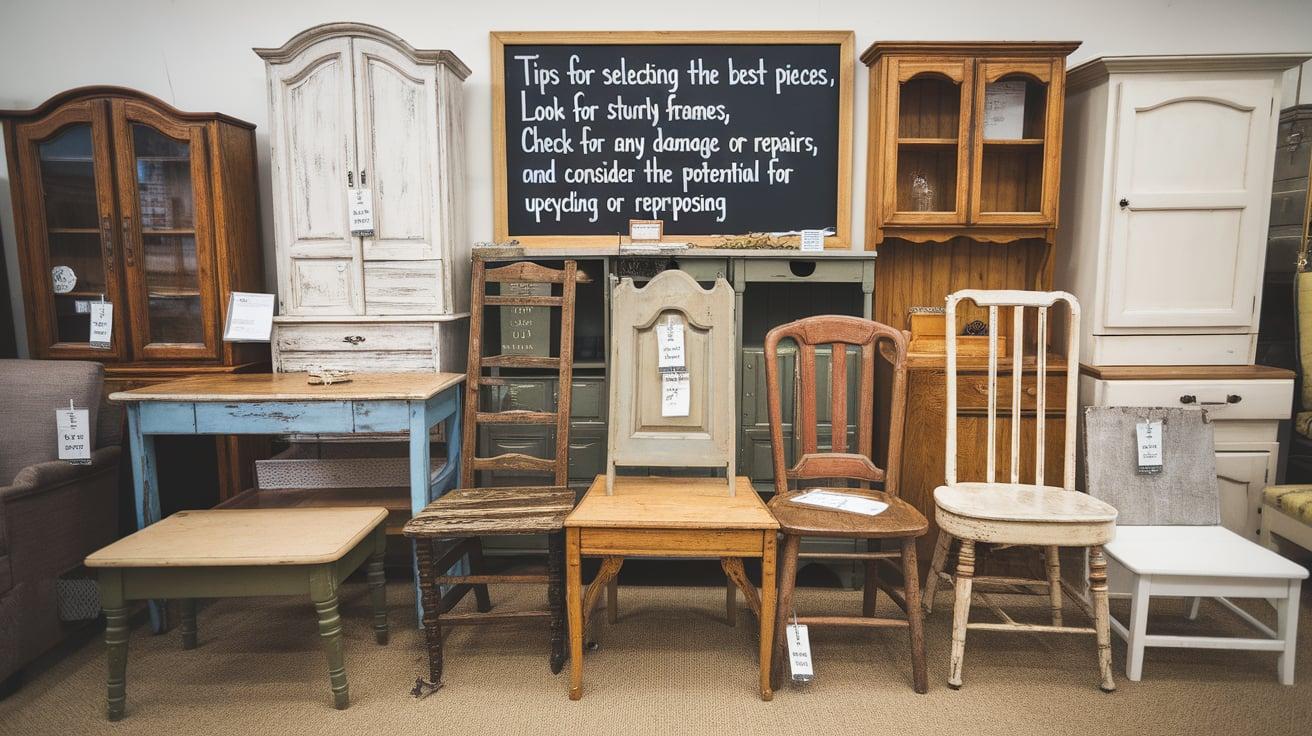
Assessing Potential
Look for sturdy pieces with a good basic structure. Wobbly legs or split wood might signal problems that are too big to fix.
Check all joints and moving parts before starting work. Drawers should slide well, and doors should hang straight.
Material Knowledge
Solid wood pieces often give the best results for upcycling projects. They can withstand sanding and repainting multiple times.
Metal furniture needs different care than wooden pieces. Surface rust isn’t always a problem, but deep rust weakens the structure.
Prioritize Safety
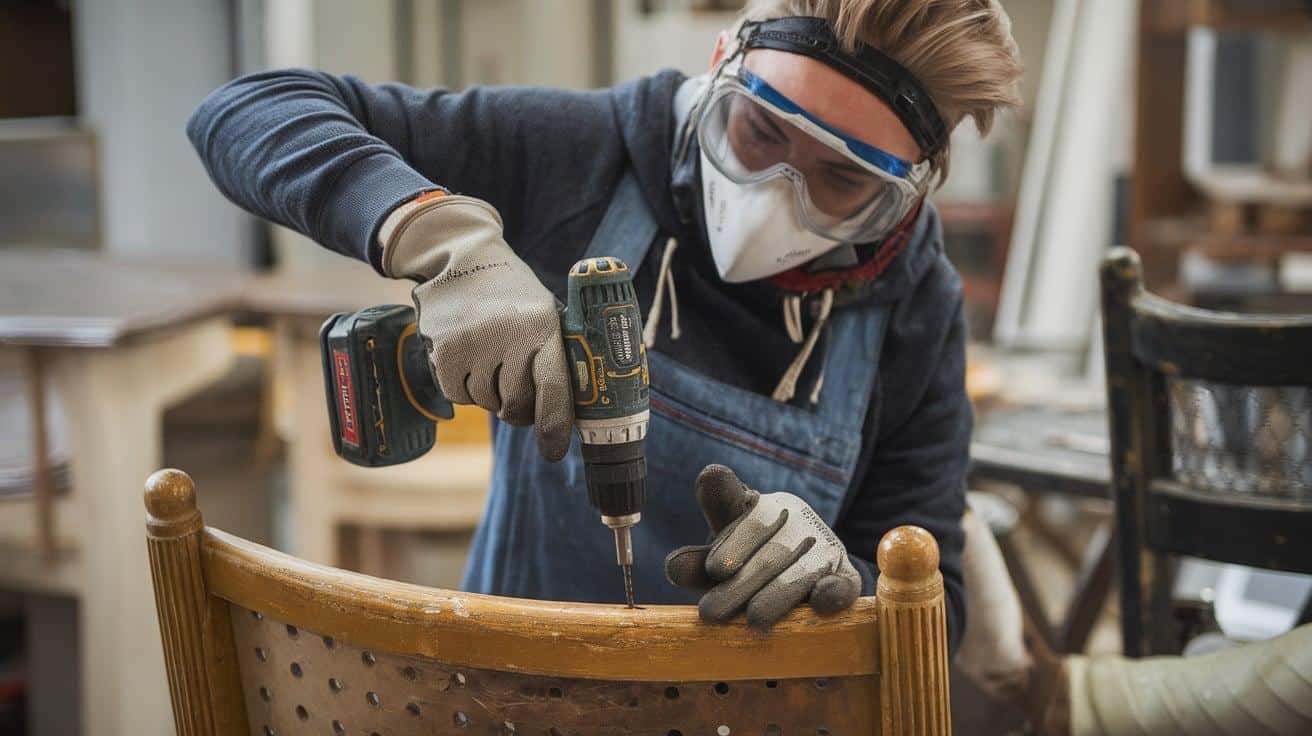
Working with Old Finishes
Test old paint for lead before sanding or stripping. Paint from before 1978 might contain harmful substances.
When using paint strippers or new finishes, work in well-ventilated areas. Open windows and use fans to move air through your workspace.
Protection Equipment
Always wear safety glasses when working with tools. Dust masks protect your lungs during sanding and painting.
Work gloves guard against splinters and chemicals. Steel-toed shoes protect feet from falling tools or furniture.
Finding Furniture to Upcycle
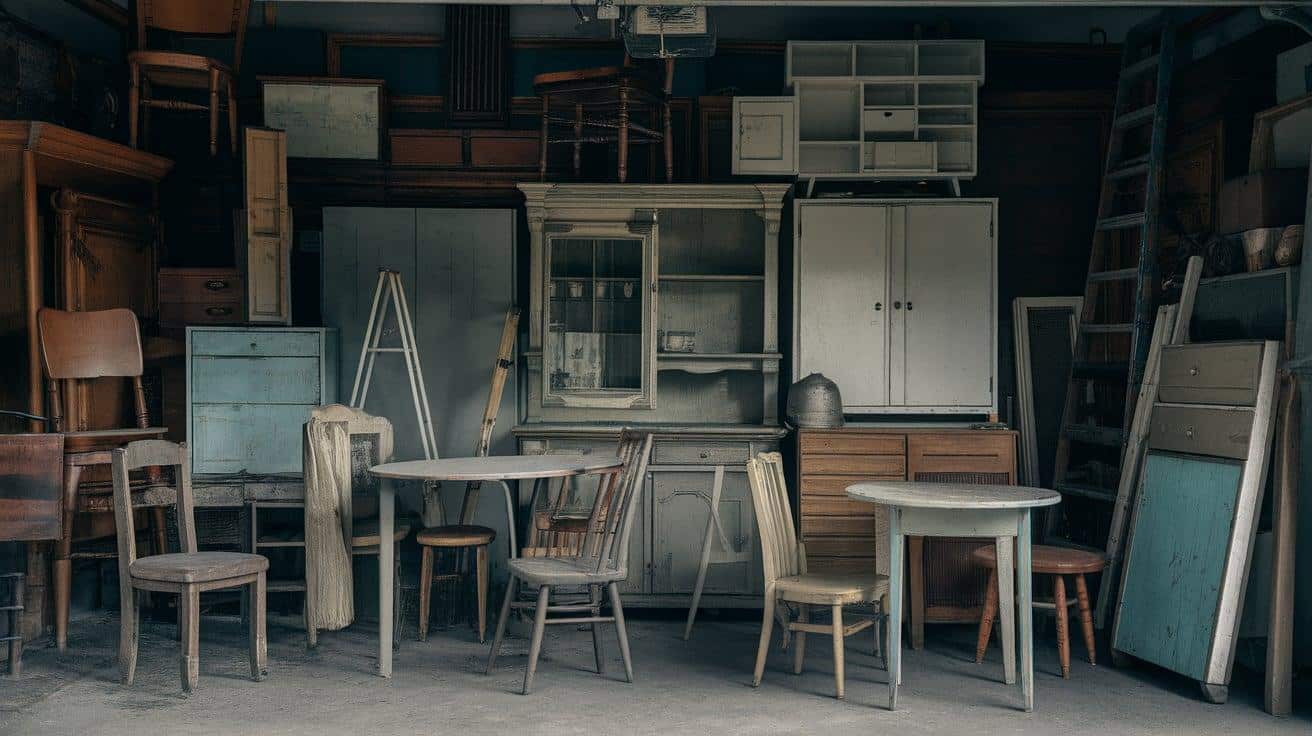
1. Hidden Treasures
Start by looking around your home for forgotten pieces. The dusty cabinet in your garage might make a perfect kitchen island.
Check your attic or basement for stored furniture. Old family pieces often have better quality materials than new items.
2. Making Smart Choices
Look at each piece with fresh eyes and imagine new uses. With simple changes, a small dresser could become a bathroom vanity.
Consider the size and shape of items you already own. Sometimes, combining two pieces creates one stunning item.
3. Thrift Stores and Charity Shops
Finding Value
Visit thrift stores early in the day for the best selection. Many stores get new items daily, so regular visits increase your chances.
Check the construction quality by wiggling joints and testing drawers. Good bones matter more than their current appearance.
Getting Good Deals
Build relationships with store managers to learn about new arrivals. Some stores offer discounts on items that have been there longer.
Ask about sale days and special events. Many shops have weekly discount days that save you money.
4. Online Marketplaces
Smart Shopping
Search local selling sites in the early morning and late evening. Many sellers post items during these times.
Set up alerts for specific items you want. This helps you spot good deals quickly.
Safe Meetups
Meet sellers in public places during daylight hours. Many police stations offer safe exchange zones.
Bring a friend and proper transportation when picking up items. Having help makes moving furniture safer and easier.
5. Alternative Sources
Estate Sales
Visit estate sales early for the best furniture options. First-day prices run higher but offer the best selection.
Return on the last day for the biggest discounts. Many sales reduce prices by 50% or more.
Community Resources
Watch for neighborhood cleanup days. People often put out good furniture they no longer want.
Check local auctions and yard sales in spring and fall. These times often have the most furniture available.
Furniture Upcycling Techniques and Methods
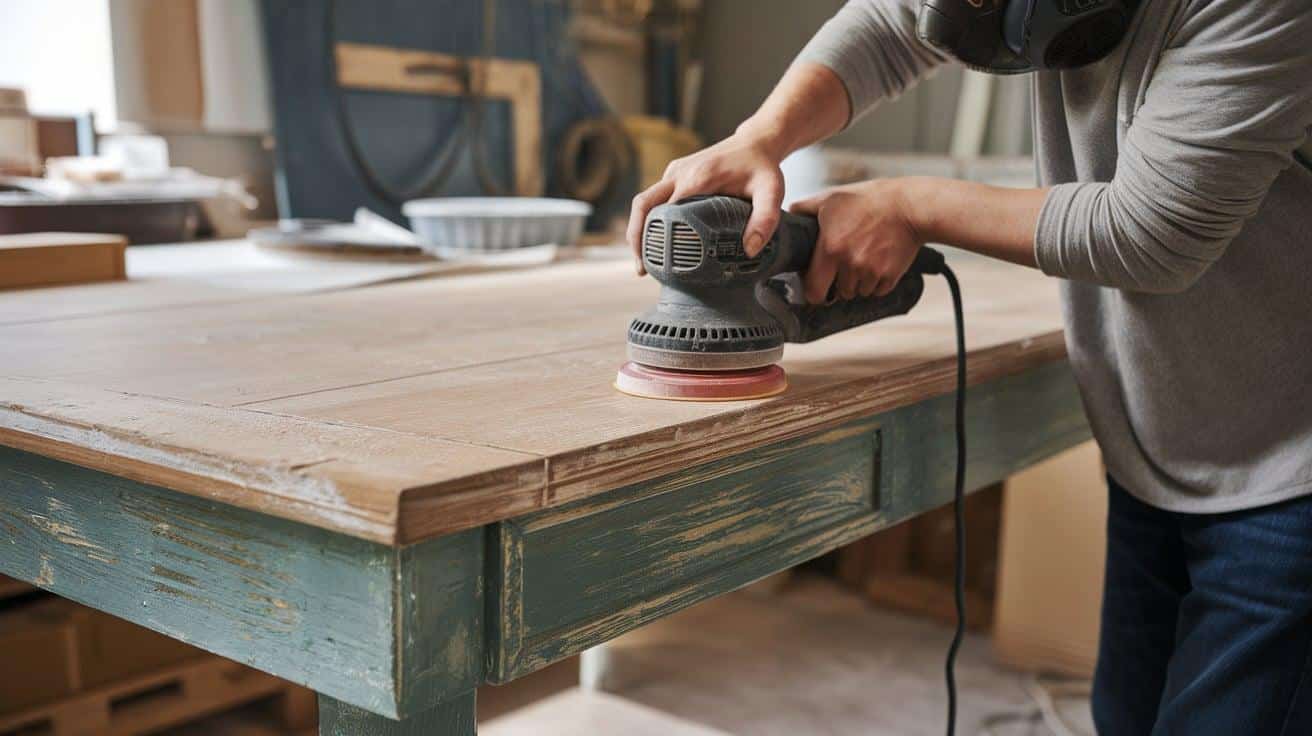
1. Preparation
Clean with soap and water to remove surface dirt and grime. This step shows the true condition of your piece.
Clean all surfaces thoroughly, including hidden spots and corners. Good preparation leads to better final results.
Sand old finishes with care to create a smooth base. Start with coarse paper and work up to finer grits.
Fill holes and scratches with the right wood filler. Let each layer dry completely before sanding.
2. Painting and Finishing
Choose paint types based on your furniture’s use. Kitchen tables need tougher finishes than decorative pieces.
Test paint colors on a hidden spot first. Different woods can affect how colors look.
Apply thin, even coats instead of one thick layer. This prevents drips and helps the paint stick better.
Let each coat dry fully before adding the next. Good drying time makes the finish last longer.
3. Decorative Techniques
Try simple patterns on drawer fronts or table tops. Masking tape helps create clean lines and shapes.
Add textures using different brush strokes or tools. Small changes can make big visual impacts.
Remove old fabric carefully to use as a pattern. Take photos before you start to help with reassembly.
Choose sturdy fabrics that match your needs. Dining chairs need stronger material than accent pieces.
4. Transformative Upcycling
Turn old dressers into storage benches with simple changes. Add a cushion top and remove some drawers.
Create entertainment centers from kitchen cabinets. Add holes for cords and adjust shelf heights.
Mix parts from different pieces to make new items. Table legs can support many types of tops.
Think about how people will use the finished piece. Good function matters as much as good looks.
Upcycling Business Insights

1. Is Upcycling Furniture Profitable?
The market for updated furniture grows each year. More people seek unique pieces that tell a story.
Local markets often lack custom furniture options. This gap creates space for small business growth.
Buyers value handmade quality over mass production. They often pay more for pieces with character and craftsmanship.
2. Starting Your Business
Start small with a few signature pieces. Build your skills before taking on client orders.
Pick a specific style or type of furniture as your focus. Some makers excel at dining sets, while others prefer small accent pieces.
Keep good records of costs and time spent. This information helps set fair prices for your work.
3. Pricing Your Work
Add up all material costs, including sandpaper and brushes. Small supplies count in your total expenses.
Calculate your time at a fair hourly rate. Include shopping, prep work, and finishing time.
Study local market prices for similar items. Your prices should reflect your quality and time while staying competitive.
4. Selling Platforms
Local markets let buyers see your work in person. Weekend markets often attract serious furniture shoppers.
Create clear, bright photos for online listings. Show details and any special features of each piece.
Consider consignment shops for steady exposure. These shops handle sales while you make more pieces.
5. Marketing Strategies
Share your process photos on social media. People enjoy seeing the work that goes into each piece.
Ask happy customers for reviews and referrals. Word of mouth brings quality leads.
Build a simple website showing your best work. Include your contact information and services.
Keep in touch with past customers through email updates. Let them know when you create new pieces they might like.
Common Challenges and Solutions
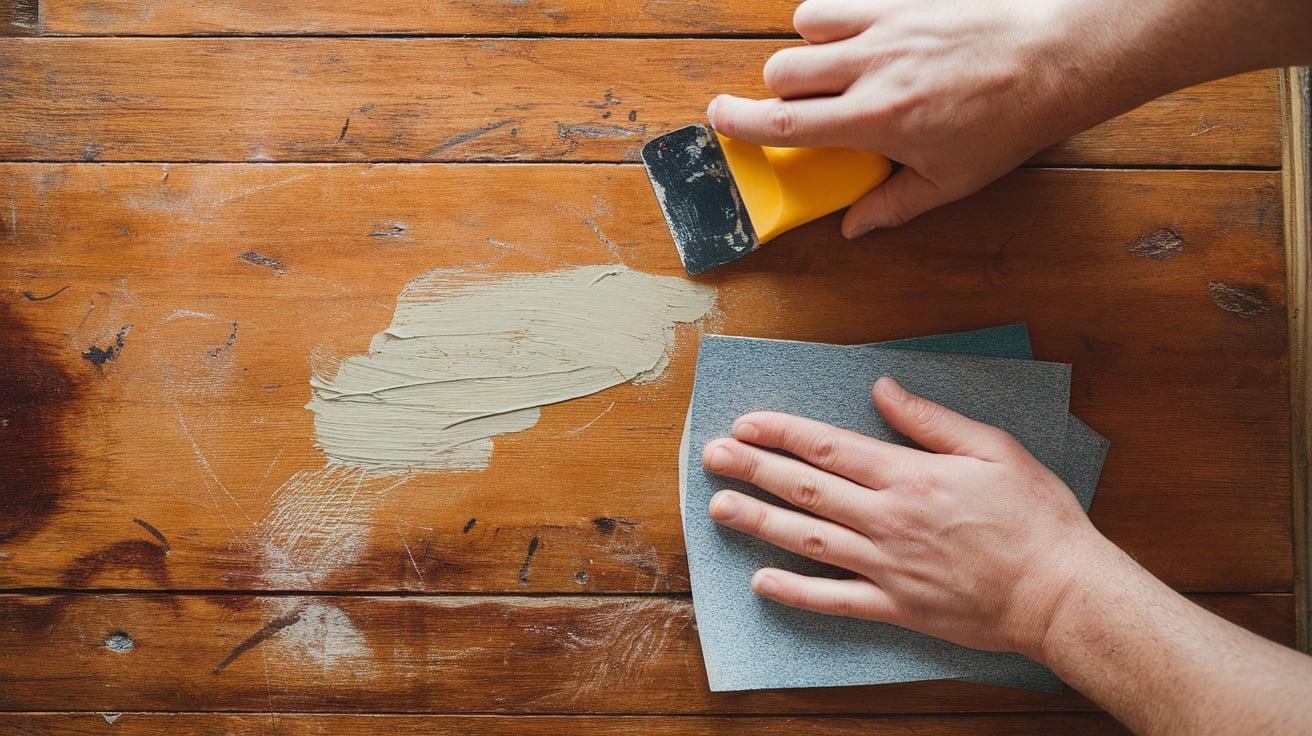
Dealing with Damaged Furniture
Wood glue fixes most loose joints and splits. Press the parts together and hold them until dry.
Replace broken drawer slides and hinges with new ones. This small fix makes furniture work like new again.
Fill deep scratches in several thin layers. Each layer should dry before adding the next one.
Avoiding and Fixing Mistakes
Test all products on a hidden spot first. This helps prevent finish problems in visible areas.
Fix paint drips while they’re wet. A light brush over the area smooths out the surface.
Sand between paint coats for a smooth finish. Light pressure works better than hard scrubbing.
Keep your workspace clean and organized. Good habits prevent the most common mistakes.
Time Management
Set up your workspace before starting each project. Having tools ready saves time during work.
Break big projects into smaller tasks. Complete one section before moving to the next.
Schedule drying time between steps. Use this time to prep your next piece.
Make a checklist for each project type. Lists help track progress and prevent missed steps.
Keep basic supplies stocked and ready. Running out of materials during work wastes time.
Sustainability and Environmental Impact
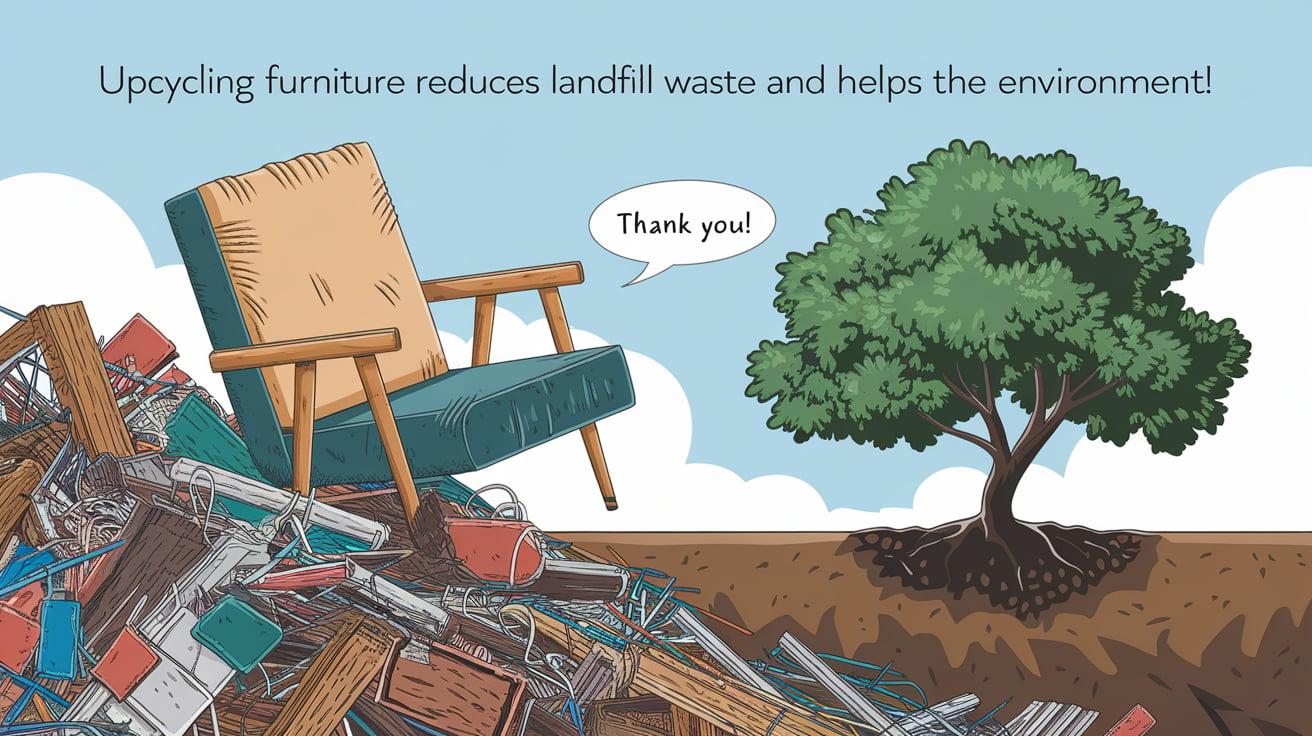
1. The Role of Upcycling in Reducing Waste
Each year, millions of furniture pieces fill our landfills. Small changes in our choices make big differences.
Old furniture often contains better materials than new pieces. Solid wood and metal last longer than pressed wood products.
2. Promoting Sustainable Practices
Share your upcycling successes with friends. Simple projects can inspire others to try.
Help neighbors see potential in old pieces. Schools and clubs often want project demonstrations.
3. Upcycling Beyond Furniture
Look at all items with new eyes. Many things can find new uses with small changes.
Turn old windows into picture frames. Doors become tables with simple additions.
Think about future uses while working. Good planning prevents waste at every step.
Conclusion
Starting your upcycling path opens doors to creativity and eco-friendly living. Each piece you save adds value to your home and helps our planet.
Begin with simple projects and build your skills over time. Your confidence will grow with each finished piece.
Remember to work safely and take time to learn proper techniques. Quality results come from careful preparation and patience.
Join the growing community of furniture makers online and in your area. Share your successes and learn from others’ experiences.
Your work matters in the bigger picture of waste reduction. Every piece you fix means one less item in a landfill.
Start your upcycling project today. That old piece of furniture might become your next favorite item.

